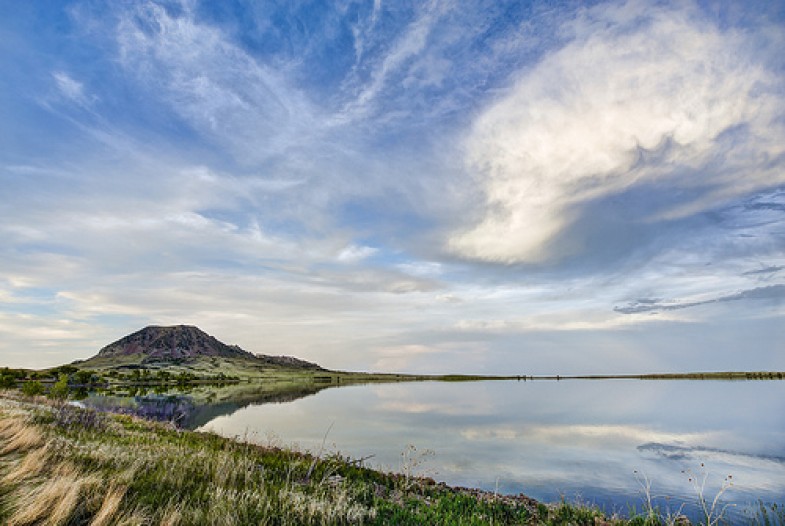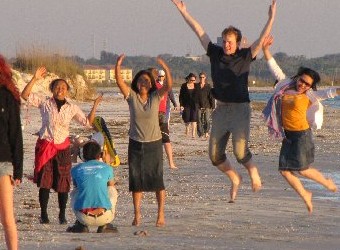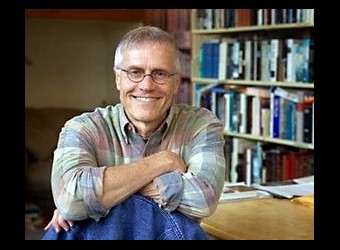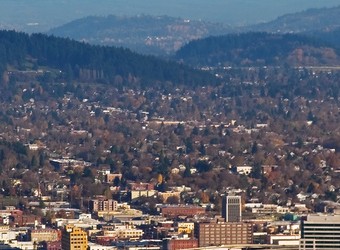Imagine if your place of worship or other sacred spot were bulldozed to make way for the golden arches of McDonald’s. That’s how many indigenous people regard the continuing development of their sacred lands for mining, tourism, highways or other uses.
Lakota and Cheyenne Indians oppose development proposals around Bear Butte, a sacred site in South Dakota that has become a state park. They've fought against a massive rifle range, noisy helicopter tours, liquor sales at a neighboring campground and a proposal for “the world’s biggest biker bar,” all of which undermine its special spiritual character. At one point, South Dakota’s governor proposed creating a buffer zone to protect the sacred site, but the plan was voted down in the state legislature.
Indigenous people around the world face an uphill battle in protecting their holy places. Because these cultures traditionally did not privately own land or keep written documentation of spiritual practices, it is difficult to legally prove the religious significance of their places of worship. These troubles are compounded by the fact that their sacred sites are often entire landscapes, such as the San Francisco Peaks in Arizona or vast tracts of rainforest in the Amazon.
One hopeful sign is scientific research showing unique geophysical properties at certain sites, which is valuable in helping native peoples establish these places as worthy of preservation, notes James A. Swan, a former professor of psychology and environmental studies who became an authority in the field of sacred places. But he cautions that measurable factors such as electromagnetic fields and negatively charged ions cannot be found at many locations traditional cultures deem holy.
Based on my own experiences visiting Bear Butte and other places holy to various cultures, I feel strongly that saving these places (both natural and man-made) is important to people of all beliefs because they are part of the richness of humanity’s cultural commons, which we have a duty to preserve for future generations. We should do all we can to broaden scientific and legal definitions of what’s sacred so these unique and powerful places are not lost, both to indigenous people and all humanity.
Something's Happening Here
I visited Bear Butte years ago as a travel editor at Better Homes & Gardens magazine. Approaching the butte, which rises dramatically from the flat plains east of the Black Hills, I stared through the windshield transfixed. It did look, as the legends say, like a sleeping bear. Getting out, notebook in hand, I soon came across a young Native American man tying small parcels to tree branches. My guide explained they were spiritual offerings.
Starting up the steep trail, I experienced a weird sensation. It was like déjà vu mixed with the exuberance you feel on a rainy day when sunlight suddenly appears from behind the clouds. Everything seemed different. Time slowed down, and each rock or bush I glanced at felt infused with special meaning.
It was not an altered state—more like a heightened sense of ordinary existence, an exciting twist on reality. Trained to be skeptical as a journalist and thoroughly steeped in a rational sensibility, I was baffled. Could too much coffee on the airplane explain these feelings? Or the change in altitude? No. There was definitely something going on at Bear Butte. But what? I hadn’t the faintest clue.
The only thing I knew for sure was that I could not explain this to eight million readers of Better Homes & Gardens — or to my editors back at the office. Mystical experiences don’t really happen in the modern world, at least not to people like me.
Later I learned that archeological records show humans have gathered at Bear Butte for at least 10,000 years, and that as many as 30 North American Indian tribes consider the mountain sacred. For the Cheyenne, it is Noahvose, the center of the universe where the Great Spirit passed elemental knowledge to the prophet Sweet Medicine, which became the basis of their religious and moral life. The courage of the Lakota (Sioux) leader Crazy Horse is said to have been predicted in a vision revealed to his father on “Mato Paha” (Bear Mountain, as it is known to the Lakota).
Jim Jandreau, the first Native American park manager at Bear Butte, noted, “Everyone that comes off this mountain, it doesn’t matter if they are Indian or non-Indian . . . are changed spiritually and morally. They may not know it when they drive out of the gate, but that stays with them.”
That’s certainly true for me. I vividly remembered that day, playing it over and over in my mind.
Sacred Sweden and the Mystical Mississippi
Something similar happened in Sweden a few years later when I was covering elections for Utne Reader magazine. I had a free day, and decided to inspect a Viking burial ground near the university town of Uppsala. The spot was lovely: sloping grassy hills dotted with trees, and a cozy Lutheran church that staked a Christian claim to this pagan site.
As I strode toward the nearest of three large burial mounds I noticed something odd. This place was nothing like Bear Butte — not topographically, not historically, not ethnically — yet I was overcome with a similar uplifting feeling. Wandering around the site for almost an hour in a mood of joyful aimlessness, I felt intensely connected to this patch of earth in a faraway country.
Again, I discovered only later that the place was once a spiritual center, the site of a major pagan temple. It was reputed to be the home, depending on which medieval texts you consult, of either the Norse goddess Freya (who we honor every Friday, Freya’s Day) or the most powerful Viking god Odin (or Woden, who is remembered each Wednesday). In 1164, it was chosen as the seat of Sweden’s first Catholic archbishop.
Through the years, strange stirrings continued to strike me in places I was lucky enough to visit. The ruins of Apollo’s Temple in Delphi, Greece. An abandoned monastery in Croatia. An old Spanish mission in Arizona. Madeline Island in Lake Superior, holy to the Ojibwe and Cree. And the confluence of the Mississippi and Minnesota Rivers, a short bike ride from my home in Minneapolis, which is the center of the universe according to many Lakota people. These places have nothing in common except that they are recognized as sacred in some religious tradition and that I felt deeply aware and alive when setting foot there.
Almost all societies hold particular places holy —from humble houses of worship and burial sites to mountains (Fuji, Olympus) and vast landscapes (the Four Corners region in the American Southwest, Tibet’s Lake of Heaven).
Joseph Campbell, the great scholar of world myths, once remarked, “The idea of the sacred place . . . is apparently as old as life itself.” Indeed the most ancient written tale, which can be traced back 5,000 years to the Middle East, tells the story of Gilgamesh, who forces his way into a holy cedar grove, destroying the trees to build himself a palace. Gilgamesh then endures a string of tragedies as punishment.
Thin Places
Today we associate sacred sites with non-Western religions, especially the nature-centered beliefs of indigenous people. Yet monotheistic religions are rich with holy places: the Wailing Wall in Jerusalem, Mecca and Medina, the sacred wells of Ireland, the pilgrim’s path to Santiago de Compostela in Spain, shrines to Francis of Assisi and Our Lady of Guadalupe, and magnificent cathedrals and temples around the world.
The Celtic tradition offers the evocative phrase “caol áit” (thin place) to describe parts of the earth that seem to bring us closer connection to the past, to heaven, to the Creator. Mindie Burgoyne, an American who leads tours of mystical sites in Ireland, describes them as “places where the veil between this world and the other world is thin.” In these settings, she says, we sometimes “sense the existence of a world beyond what we know through our five senses.”
Burgoyne’s interest in thin places was sparked on a trip to Ireland when she and friends became lost one evening in the countryside of Tipperary, and pulled their car to the side of the road. While her traveling companions consulted the map, she got out to inspect the ruins of an old monastery. At first it felt “creepy,” she recalls, then she began to wonder: Who lived here? Who touched these stones? Who prayed here? What kind of yearnings did they have? Why did the monks choose this site to build their monastery? Suddenly she heard her friends shouting, “How long are you going to keep us waiting?” They said she’d been wandering for half an hour — to Burgoyne it felt like a couple minutes.
What Makes a Place Sacred?
Researchers exploring the outer boundaries of psychology, geology and physics attempt to explain scientifically why people report strange sensations or mystical insights in certain places. Their theories focus on areas located near fault lines or that register high levels of naturally occurring radioactivity, electromagnetic fields or positively charged ions, all of which have been shown to evoke a response in some humans.
Other causes have been singled out for particular spots held sacred by native peoples: the waters of Indian Hot Springs in Texas contain high levels of dissolved lithium; the Serpent Mounds in southern Ohio were built atop a unique geological formation created by either a meteorite or a volcano.
“There are more than a dozen factors that contribute to the presence of energy at the sacred sites,” notes Martin Gray, the author of Sacred Earth, who spent 20 years studying and photographing such places for National Geographic and other publications. “It is the combination of a number of these factors, rather than just one, that catalyzes the psychological and physiological effects in human beings.”
“Not having scientific devices to measure the high-energy fields of these sites, how did prehistoric people determine their precise location?” Gray asks. “Ancient people, living in harmony with the earth and dependent upon its bounty for all their needs, may have developed skills that modern people no longer use, cultivate or even recognize.”
Gray provides a plausible reason for another mystery I've always wondered about: why my wife, Julie, and I once hopped off a tour bus in Iceland and scampered euphorically across a remote meadow as if we’d arrived in the Promised Land. It wasn’t just because we were on our honeymoon. The meadow, called Thingvellir, is cherished by Icelanders as a national shrine, the place where tribal chieftains gathered in 930 CE to establish an open-air parliament, which continued to meet in that spot until 1789. The meadow also happens to occupy a location charged with geological energy — a fault line where the tectonic plates underlying Europe and North America meet.
Adapted and updated from an article originally appearing in Notre Dame magazine.







